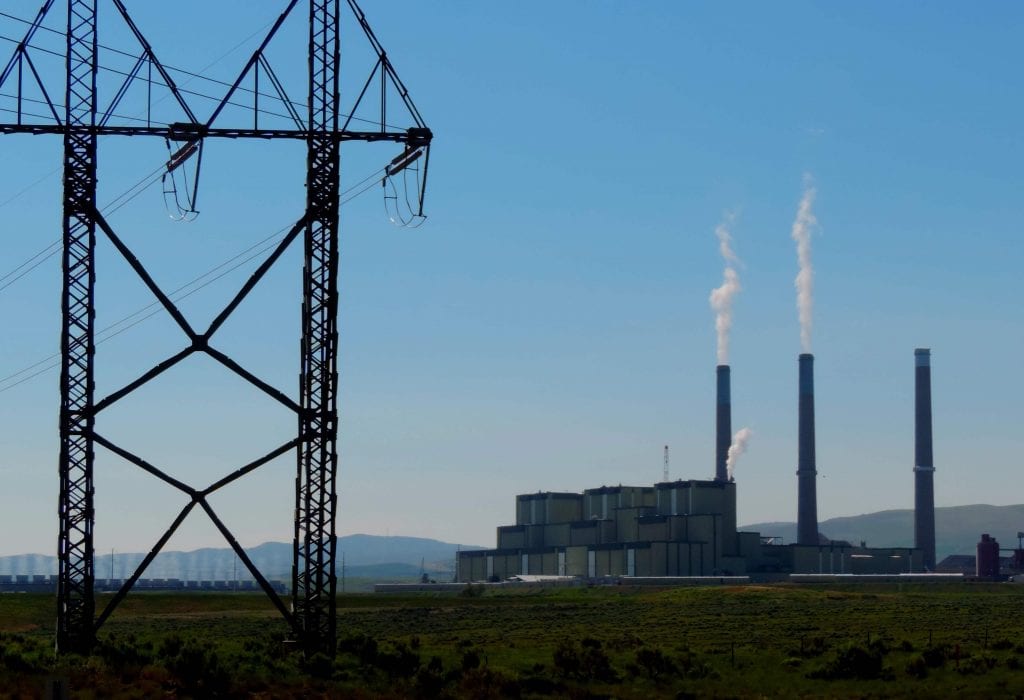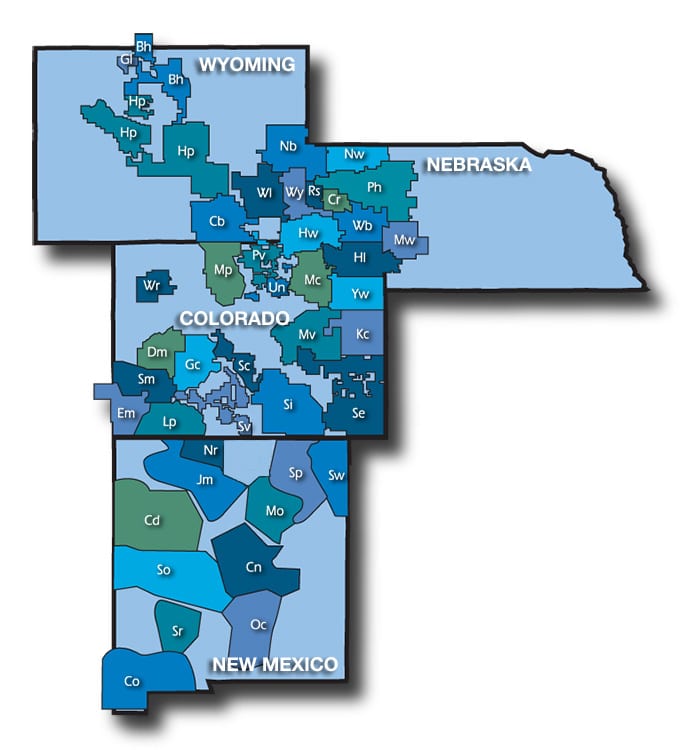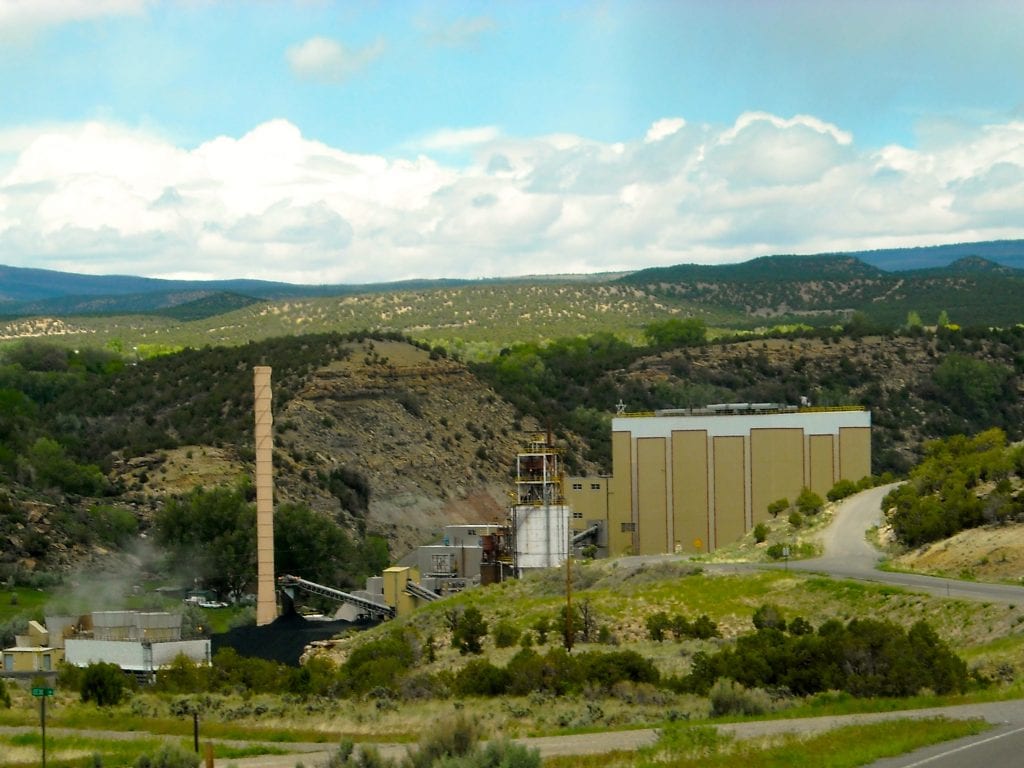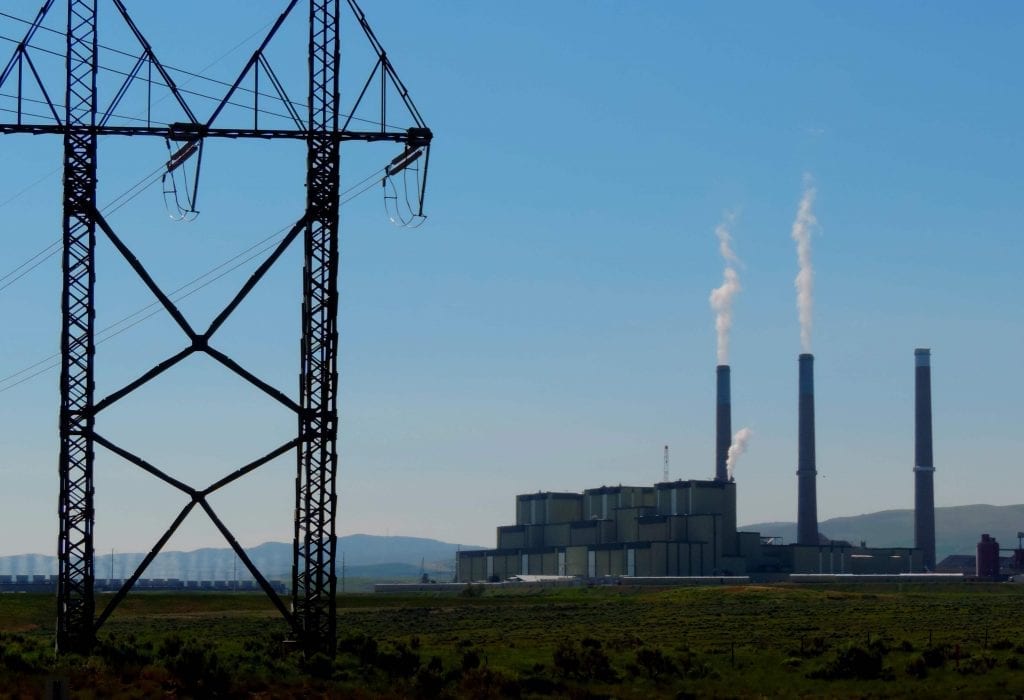
In spite of Tri-State Generation and Transmission Association’s hype around renewable energy, the company remains one of the most fossil fuel dependent electric utilities in the western U.S. Worse, the company seems to be one of the most significant impediments to clean energy development in the American West.
A Background of Tri-State Generation and Transmission
For those who don’t know, Tri-State is basically an über-electric cooperative. The company provides electricity generation and transmission services at cost to 43 member “distribution” cooperatives in Colorado, Nebraska, New Mexico, and Wyoming. Through its members, the utility serves a little more than 600,000 members, primarily in rural communities. The map below shows where members of Tri-State are located.
A Deceptive “Renewable” Ad Campaign
In recent months, Tri-State has launched an intensive advertising campaign around the utility’s claimed commitment to clean energy. With the character “Renewable Randy” (and the hashtag #GeneratePossibilities) at the forefront, the company is widely touting its assertion that 30% of the electricity consumed by its members comes from renewable sources.
(Incidentally, “Renewable Randy” is actually Denver-based actor, Steve O’Neill, who is also a really funny comedian that you should pay attention to and see if at all possible! Check him out with his troupe, Gender Neutral Sweater!)
The truth is that 30% is a bit of an exaggeration. Most importantly, however, it underscores Tri-State is still around 70% dependent on fossil fuels. And the reality is, that is costing its members more than ever.
First off, let’s break down Tri-State’s “30% renewable” claim. According to the company’s most recent annual report to the Securities and Exchange Commission, Tri-State provides a maximum of 4,463 megawatts of electric generating capacity to its members.
This includes 2,808 megawatts of directly owned generating capacity, 100% of which is fossil fueled.
It also includes a maximum of 580 megawatts purchased from the Western Area Power Administration (or WAPA), a Department of Energy agency that sells power generated by federally owned hydroelectric facilities.
It also includes 598 megawatts of power purchased from Basin Electric, another electricity generation and transmission cooperative that Tri-State is a member of.
Finally, it includes 477 megawatts of power purchased by Tri-State from solar and wind facilities.
Below is the breakdown of the electricity capacity provided to the company’s members:
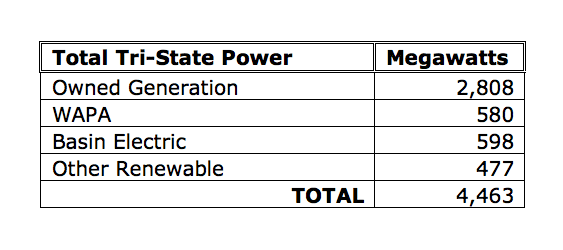
Of this total generating capacity, more than 70% is fossil fueled, the majority of which is fueled by coal.
In terms of the power generation it directly owns, Tri-State is 100% fossil fueled. In fact, according to the company’s latest annual financial report, they own 1,835 megawatts of coal-fired generating capacity. This includes capacity at five coal-fired power plants in Arizona, Colorado, New Mexico, and Wyoming.
It also includes 973 megawatts of natural gas and oil-fired power plants in Colorado and New Mexico. All told, nearly 63% of the power directly generated by Tri-State comes from coal, oil, and natural gas. Below is the list of the company’s directly owned fossil fueled power generating facilities from its latest annual financial report.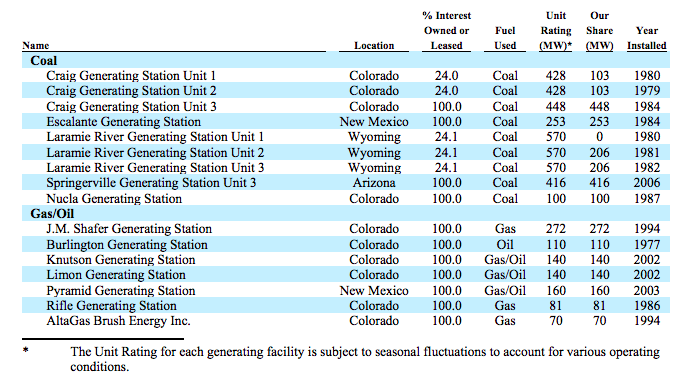
That’s not all the fossil fuels, though. According to Tri-State’s most recent financial report, they bought nearly 600 megawatts of power from another utility, Basin Electric. According to Basin Electric’s reports, the company derives 68% of its power from fossil fuels, primarily coal.
This means only 191 megawatts of what Tri-State purchases from Basin Electric could conceivably be described as renewable. And while it’s true that the 580 megawatts of power purchased from the
Western Area Power Administration is considered renewable hydropower and that Tri-State purchases 477 megawatts of solar and wind, that still means the company is providing 28% renewable energy to its customers, at best.
Still Dependent on Fossil Fuels
That’s not 30%, as Tri-State claims. But rather than splitting hairs, let’s simply acknowledge the fact that while the company has moved toward renewable energy, it remains heavily dependent on fossil fuels.
In fact, even presuming that Tri-State is 30% renewable, this means the company is 70% reliant on fossil fuels. That makes Tri-State one of the most carbon intensive utilities in the nation.
It also makes it one of the most expensive utilities. Given that the costs of fossil fuels are much higher than renewables, the company’s intense reliance on fossil fuels isn’t just a climate disaster, it’s a financial calamity.
And it’s not just fossil fuel burning that’s costing money and raising questions around Tri-State’s commitment to renewables. It’s also the fact that Tri-State is in the business of coal mining, an increasingly costly endeavor.
The company owns or is financially invested in four active coal mines in Colorado and Wyoming. Unfortunately, Tri-State is failing to provide legally required financial guarantees to ensure clean up for all of these mines. It also appears that reclamation is failing to comply with federal law at at least one mine that Tri-State is financially involved in, the Dry Fork mine in Wyoming.
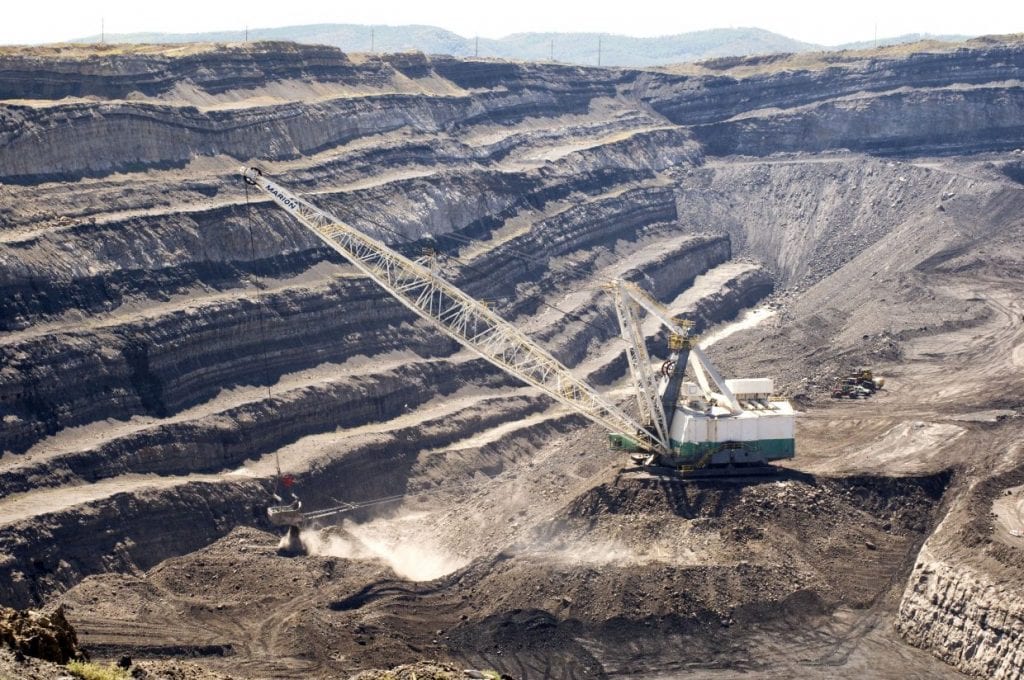
Tri-State is failing to provide financial guarantees to ensure the clean up of the Colowyo coal mine in northwestern Colorado. Photo by Craig Daily Press.
And Still Hostile to Renewables
Perhaps more insidious is that Tri-State’s contracts with its members appear to be incentivizing the company to continue to rely on fossil fuels. As recent reports have found, Tri-State’s contracts are stifling renewable energy development within its Colorado members’ service areas and within its New Mexico members’ service areas.
Given that these contracts aren’t up until as late as 2050, Tri-State simply has no incentive right now to move to clean energy. The sad truth is, they have their members over a barrel and can force them to pay whatever the company wants.
This is shocking. Because while Tri-State’s average wholesale rate to members is 7.5¢/kilowatt-hour, the levelized cost of renewables is far lower and declining.
Within the company’s territory, wind can cost as low as 1.8¢/kilowatt-hour to develop and even solar photovoltaic can be as low as 2.9¢/kilowatt-hour. The chart below compares the trends in Tri-State wholesale rates and the levelized cost of wind and solar.
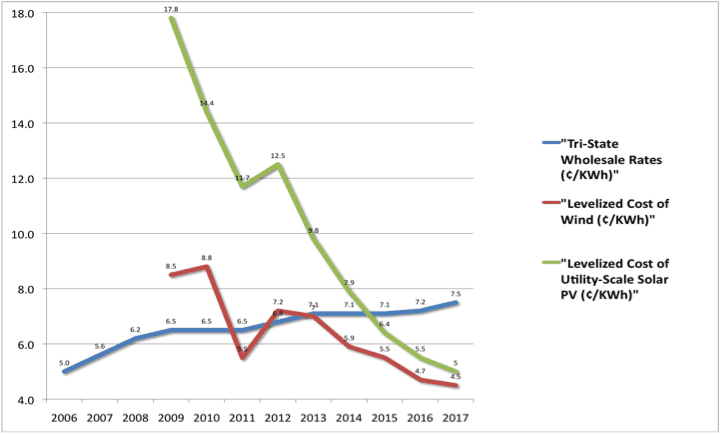
While Tri-State clearly recognizes renewables are desirable, the company has yet to make a bold move to fully integrate solar, wind, and other renewable energy resources into its generating portfolio. Unfortunately, this means Tri-State is still providing expensive, fossil fuel laden power to its members.
Some Moves in Right Direction, But Not Enough
To be certain, Tri-State has made some commitments to retire some of its coal-fired power generation. Last year, the company divested its 40 megawatt ownership in the San Juan Generating Station in New Mexico.
And at the end of 2016, they committed to retiring its 100-megawatt Nucla power plant by 2022 (as well as retire the New Horizon mine, which fuels the plant) and its 103-megawatt share of Unit 1 at the Craig Generating Station by 2025.
This is a big deal and it’s worthy of applause. However, even after these moves, the company will still have 1,632 megawatts of coal-fired generating capacity online and fossil fuels will still be the source for the large majority of its power.
What’s worse, the company is making significant investments in more fossil fuels in the meantime. The company right now is spending millions to repair and upgrade its 448-megawatt Craig Unit 3 and is investing huge amounts into expanding its Colowyo coal mine in Colorado.
In the long-term, the company’s continued reliance on and investment in fossil fuels will only saddle rural western U.S. communities with higher energy bills. If the company moved more aggressively toward renewable energy, not only would electricity rates drop, but carbon emissions and other harmful pollution would be eliminated.
30% renewable or not, the reality is, the longer Tri-State stays dependent on fossil fuels, the more it will cost its members and cost our society.
